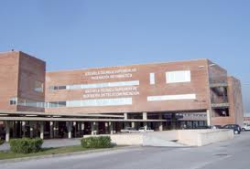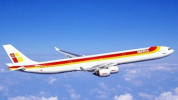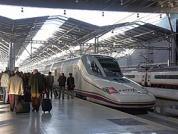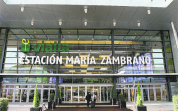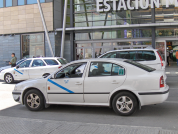
|

|
Conference Location
|
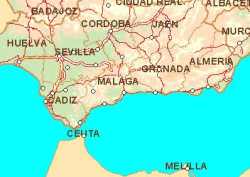
|
Indeed, Málaga is a city of Art & Culture: having been founded by the Phoenicians in 7th century BC and subsequently ruled by Romans, Moors, and Castillian Kings, the city comprises numerous monuments (the Roman Theater, the Moorish Fortress and Castle, the Cathedral, etc.), churches, palaces, and noteworthy buildings that illustrate its historical past.
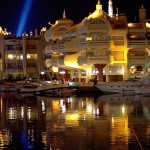
|

|

|
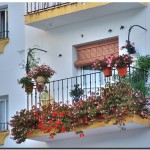
|
Málaga was also the home town of Pablo Ruiz Picasso, and not surprisingly it is also known as the City of Museums with +30 museums devoted to Painting, Sculpture, Music, Jewellery, Sports, just to name a few. All of the above can be complemented by letting oneself be embedded in Malagueño life style, enjoying the local gastronomy, the warm weather, and the hospitality of the people. And if you need more, Málaga is an excellent base for exploring nearby places, thanks to its exceptional transport infrastructure.
Climate
Málaga enjoys a subtropical climate. It has one of the warmest winters in Europe, with average temperatures of 17 °C during the day and 7-8 °C at night in the period from December to February. The summer’s season lasts about 8 months, from April to November, although also in the remaining 4 months temperatures sometimes reach around 20 °C.

|
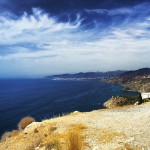
|

|

|
Beaches
The Málaga beaches are privileged to be located alongside a grand city with all that this signifies in inherent services and attractions. With an extension of 14 km, they have excellent communications, both by public transport and by private means and they are separated from the urban traffic by magnificent esplanades that make them true havens of peace and oases of tranquility.

|
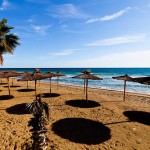
|

|
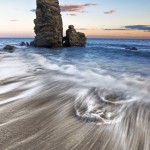
|
Think of the advantage of being able to combine, in one destination, a wealth of monuments, museums, culture and gastronomy with the possibility of stretching out in the sun or simply taking a walk along our beaches. In one and the same city, you can delight in the genius of Picasso or visit a monumental ensemble such as the Alcazaba-Gibralfaro-Roman Theatre, and at the same time enjoy some great beaches where you can sunbathe, practice some sport, walk, or just sit, relax and rest. There are many ways of enjoying them, and remember that a trip to the beach is great any time of the year.
Monuments
The old historical center of Málaga contains architectural remains from all civilizations (Phoenician, Roman, Visigothic, Arab and Spanish) that have ruled the city in the last 2,700 years. Among the most remarkable sights we can cite:
-
Teatro Romano: a 1st century BC Roman theatre located at the foot of the Alcazaba. It was built in times of Augustus and was used until the 3rd century; after that it was used as a quarry by the Moors to restore the Alcazaba.
-
La Alcazaba: a 11th-century palace-fortress of the Moorish governors, built on a hill in the middle of the city. It is the best preserved such construction in Spain.
-
Castillo de Gibralfaro: a 14th-century castle built to defend the citadel. It provides impressive sights of the whole city and the sea.
-
La Catedral: Málaga’s cathedral was built between the 16th-18th centuries, although it is still unfinished (missing the top part of the main façade and the south tower); this has become an original and distinctive feature and is the origin of the nickname ‘La Manquita’ (one-armed).
In addition to the above, Málaga features numerous Renaissance and Neoclassical churches and abbeys, as well as several palaces and a plethora of other noteworthy buildings. Please check here for more details.
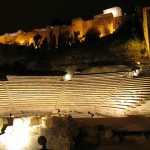
|
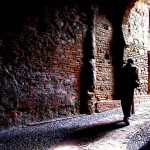
|
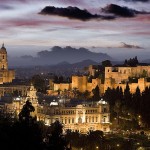
|

|
City of museums
With over thirty museums, fifteen of them grouped together in the same area, Málaga has become a true City of Museums. With the incorporation of new projects (Wine Museum, Heritage Museum, Fine Arts Museum and the Holy Week Museum), its Historical Quarter alone will have as many as twenty-three museum facilities (whose themes include painting, religious art, archeology, bullfighting, flamenco, science, etc.), making Málaga one of the cities with the highest density of museums in its Historical Quarter. There is the additional advantage that all are close to one another, most of them in pedestrian areas with easy access.
Those with an inclination to painting will appreciate the museums devoted to Picasso, the world-renowned Malagueño artist whose birthplace (and museum) can be visited at the Plaza de la Merced, 15. Also devoted to Picasso is the Picasso Museum of Malaga located in the Buenavista Palace. In addition to Picasso, Málaga hosts other remarkable museums such as the Museo Carmen Thyssen Málaga located in 16th-Century Villalón palace, which harbors an impressive collection, the Malaga Contemporary Art Centre (CAC) located in the former Wholesalers Market, and the Municipal Museum, located in Paseo Reding 1. This video shows some visual excerpts of these museums.
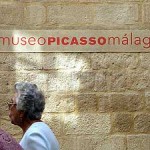
|

|

|

|
The map below provides an overview of the location of museums in the Historical Quarter.
See Malaga. City of Museums in a larger map.
Nature and Parks
-
The Parador de Turismo Málaga-Gibralfaro which offers wonderful views of the city.
-
Malaga’s city park which is one of the few exterior botanical places on the European continent that maintains species totally acclimatized from tropical and subtropical regions. Created in the 19th century. Nearby you can find the City Hall building constructed by the local architect Fernando Guerrero Strachan, it was built between 1912 &1919. It is very pleasant to stroll around this park as you make your way to downtown Malaga from the sea front, the trees and the almost hidden spots that surround you, add to the charm of this walk. In the event that you still want to keep strolling, without having to walk anymore, you can always get a ride in one of the horse carriages that awaits visitors at the end of the park.
-
Natural Park “Montes de Málaga”: a nearly 5,000 ha natural park considered as the green lung of nearby areas. It is perfect for hiking, and features four different trails.
-
Historical Botanical garden “La Concepción”: Exuberant tropical garden from the 19th century. It is considered to be one of the best displays of tropical flora in all of Europe, providing visitors the feeling of being in a jungle surrounded by beautiful gardens. A visit to these gardens, situated 5 km from the city centre, is an unforgettable experience.
-
The Retiro Botanical Garden: Subtropical gardens, monumental fountains, ornithological park. It has been declared historical and artistic garden. It is really a wonderful natural spectacle, with lakes, cascades and hundreds of species of plants and trees where thousands of birds live integrated in this heaven of wondrous gardens
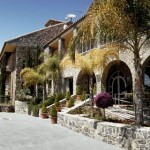
|
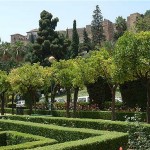
|
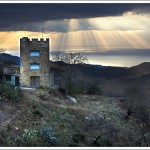
|
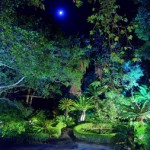
|
Gastronomy
A trip around the culinary world of Málaga can many times confuse somebody who is just beginning to learn the Spanish way of life: they don’t know what this is or that is… it is almost impossible to present a complete list of the dishes here, since there are too many to list but it is very simple: when you find something that you don’t know what it is in a restaurant menu, try it!
Typical food that we recommend are the fried fish that is the king of Malagan gastronomy, the Victorian anchovy and clams. Typical fish foods are: “Boquerones fritos” (fried anchovies), “Salmonetitos” (Fried Small Red Mullets), “Chopitos” (Baby cuttlefish), “Calamaritos” (Fried Small Squids), “Rape” (Angler fish), etc. Andalusian gazpacho is outstanding as a first dish. Ajoblanco is another type of cold soup, made of a mixture of almonds, garlic, olive oil, dry bread, muscatel grapes, vinegar and salt.
You must try and taste, of course, all the specialties that the Coast of the Sun offers you, as the salmorejo, a gazpacho with almost no water, a tortilla (omelet) of potatoes with onions and peppers, or some grilled shrimp or boiled with salt. Málaga, like in any other city in Spain, also has has its own special paella, being in this case the “seafood” one.
Note also that Andalusia is the region of tapas by excellence. These are little dishes of food that go very well with a cold beer or a “summer red wine” or any other cold drink. They are usually eaten around noon time as an aperitif or as they say “when you go out to eat tapas the aperitif and lunch turn into one meal”. As a fact this expression “GOING OUT FOR TAPAS” implies going from bar to bar, tasting the specialties of the “house” in these small portions with whatever drink you prefer. Recall also that Málaga province is a land of wines (production dates back to the city foundations). There are two Denominations of Origin: “Málaga” (comprising liquor wines and naturally sweet wines) and “Sierra de Málaga” (comprising white and red wines).

|

|

|
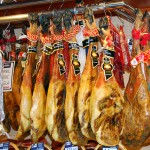
|
Shopping and Going Out
Málaga offers you all you need and even more in terms of shopping. You can find several large shopping centers in downtown, e.g.,
and several other in the outskirts of the city. You can also opt for the small shops in any of the shopping streets of the Historical Quarter, such as Calle Nueva or Calle Larios.
If you go out for shopping in the morning, you may consider taking a break for a late mini-breakfast (coffee or hot chocolate with churros is a good option) or -if late enough- for a drink an some tapas. There are plenty of cafes, bars and terraces where you can enjoy such a break. You can do similarly in the afternoon: actually, the merienda (afternoon snack) is one of the most respected meals in Spain. You can try one of the several nice Moroccan-style tea houses in town, serving an amazing variety of teas in addition to other interesting non-alcoholic drinks, which you can accompany with some pancakes.
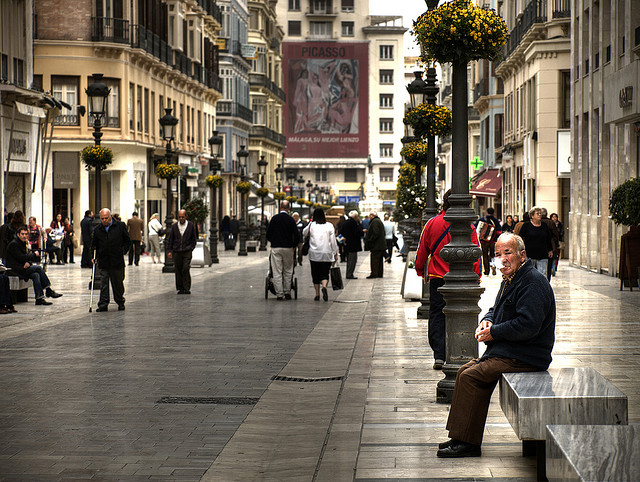
If you want to go out for a drink in the evening, there is always a party atmosphere everywhere and it would be very difficult not to have a great time when you go out at night in the historic downtown area of Málaga. After a tasty little dinner you can keep on partying in all the bars and discotheques that are open until the early hours of the morning. This nightlife area goes from Plaza de la Merced to Plaza de la Constitución, along the streets and squares – Granada, Alcazabilla, Plaza de Uncibay, Convalecientes, Comedias, Luis de Velázquez, Santa Lucía – etc., and many others, all of them full of great spots to spend a night out. Of course, you may prefer more relaxed areas where you can talk, enjoy a drink and some good music. Most of the establishments in La Malagueta, Paseo de Sancha, Limonar and Pedregalejo provide the ideal setting for an evening chatting with friends accompanied by good music.
promotional video
Parts of this text were copied from 
 Conference Venue
Conference Venue
|
|
This year the Game-On conference will be held at |
How to reach Malaga and the conference venue 
By Plane
|
|
By Train |
Málaga offers good connections by train to cities like Madrid (4 hours, 7/day), Córdoba (1 hour, 7/day), Seville (2 hours, 5/day), Barcelona (1/day), Bilbao (1/day). More info about trains. |
By Bus |
There are also good connections by bus with cities near Málaga: Granada (1:45 hours), Almería (3 hours), Córdoba (2 hours), Cádiz (3:30 hours), Seville (2 hours). You can also find buses to Madrid (5 hours), Valencia (7 hours) and Barcelona (10 hours). More info about buses. Once in Malaga take either Lines 8, 20 and 22 which have stops very close to the School (less than 1 min). From the city centre you can take line 20. See the map of reaching ETSII by bus here. |
By Taxi |
From the city centre, a taxi costs around 6 euros. And from the airport, around 10 euros. |
By Car |
There are motorway connections with Granada (125 km), Seville (220 km), Madrid (550 km) and Córdoba (180 km). And there are also secondary roads to reach Almería (250 km) or Cádiz (250 km). More info about roads. On how to get to the University once you are in Malaga, follow this link. |
By Boat
|
There are regular connections to Melilla, Ceuta and Tangier. More info about boats. |
Malaga Maps

|

|
Click on the maps above for a more detailed view

 Málaga is a thriving and dynamic city in Southern Spain. Bathed by the Mediterranean See and surrounded by Málaga Mountains, the city enjoys a warm climate tempered by the proximity of the sea. This has contributed in making Málaga one of the main touristic destinations in Europe. The city has ,however, much more to offer than sun and beaches.
Málaga is a thriving and dynamic city in Southern Spain. Bathed by the Mediterranean See and surrounded by Málaga Mountains, the city enjoys a warm climate tempered by the proximity of the sea. This has contributed in making Málaga one of the main touristic destinations in Europe. The city has ,however, much more to offer than sun and beaches.
